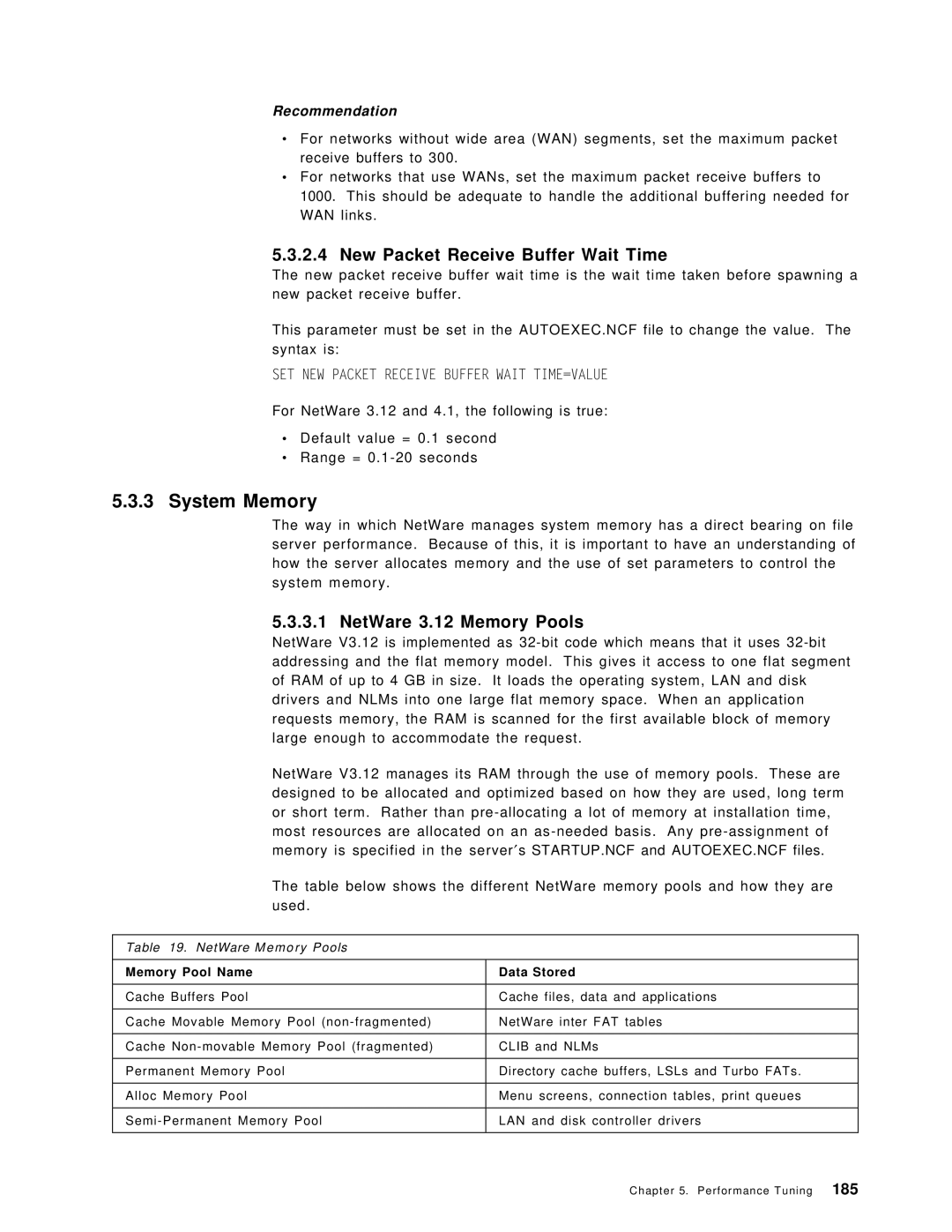Recommendation
∙
∙
For networks without wide area (WAN) segments, set the maximum packet receive buffers to 300.
For networks that use WANs, set the maximum packet receive buffers to 1000. This should be adequate to handle the additional buffering needed for WAN links.
5.3.2.4 New Packet Receive Buffer Wait Time
The new packet receive buffer wait time is the wait time taken before spawning a new packet receive buffer.
This parameter must be set in the AUTOEXEC.NCF file to change the value. The syntax is:
SET NEW PACKET RECEIVE BUFFER WAIT TIME=VALUE
For NetWare 3.12 and 4.1, the following is true:
∙
∙
Default value = 0.1 second Range =
5.3.3 System Memory
The way in which NetWare manages system memory has a direct bearing on file server performance. Because of this, it is important to have an understanding of how the server allocates memory and the use of set parameters to control the system memory.
5.3.3.1 NetWare 3.12 Memory Pools
NetWare V3.12 is implemented as
NetWare V3.12 manages its RAM through the use of memory pools. These are designed to be allocated and optimized based on how they are used, long term or short term. Rather than
The table below shows the different NetWare memory pools and how they are used.
Table 19. NetWare Memory Pools |
|
|
|
Memory Pool Name | Data Stored |
|
|
Cache Buffers Pool | Cache files, data and applications |
|
|
Cache Movable Memory Pool | NetWare inter FAT tables |
|
|
Cache | CLIB and NLMs |
|
|
Permanent Memory Pool | Directory cache buffers, LSLs and Turbo FATs. |
|
|
Alloc Memory Pool | Menu screens, connection tables, print queues |
|
|
LAN and disk controller drivers | |
|
|
| Chapter 5. Performance Tuning 185 |
